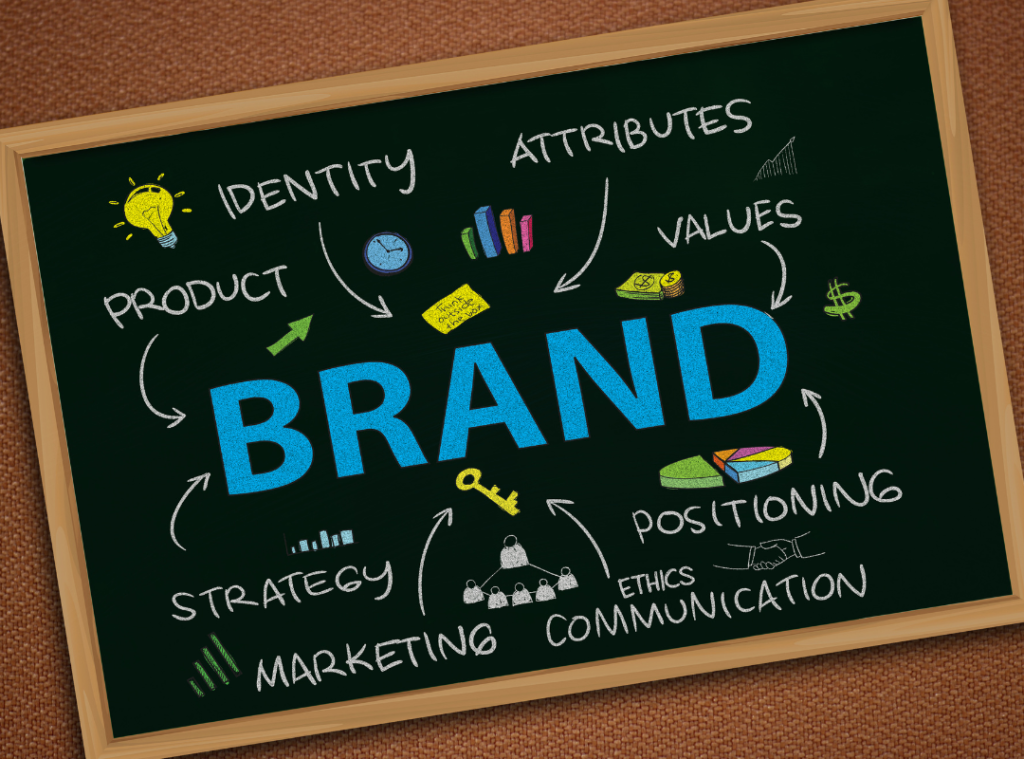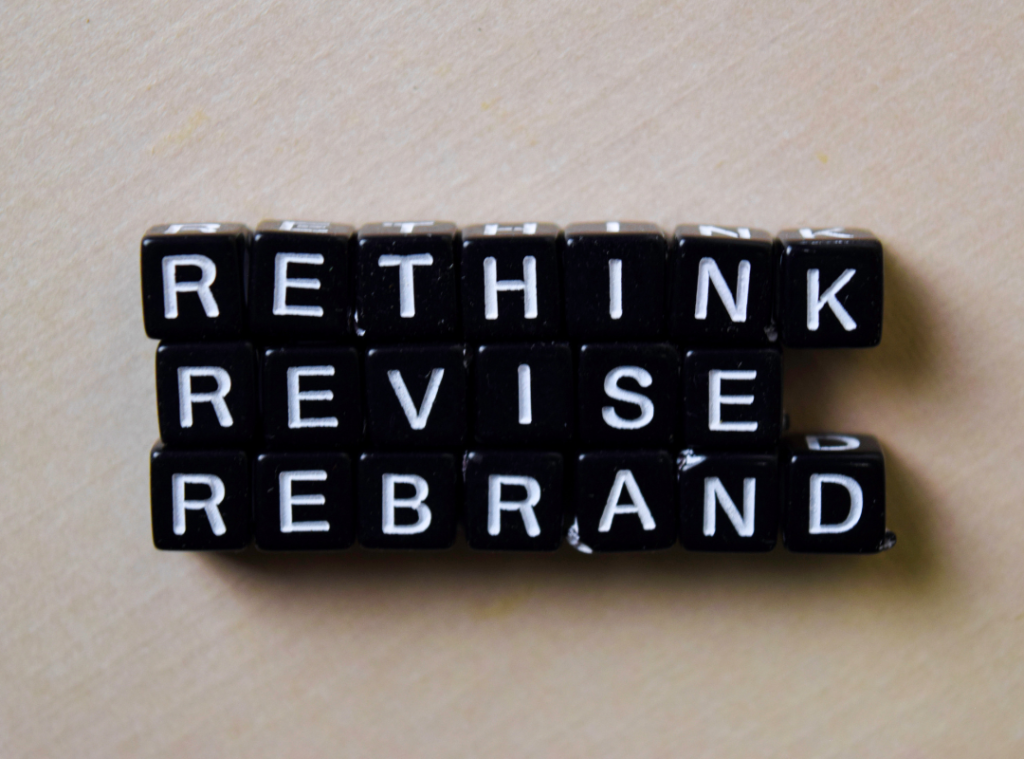Brand Identity: The Key to Building a Memorable and Successful Business

In today’s crowded marketplace, having a strong brand identity is more crucial than ever. It’s what sets your business apart from competitors and creates a lasting impression on your target audience. But what exactly is brand identity and how can you develop one that resonates with your customers? This article will explore the ins and outs of brand identity, providing actionable steps to create a powerful brand that stands the test of time.
What is Brand Identity?
Brand identity encompasses all the visual and emotional elements that represent your company’s values, personality and promise to customers. It goes far beyond just a logo or colour scheme – it’s the entire experience customers have when interacting with your brand across all touchpoints.
A strong brand identity:
- Differentiates you from competitors
- Builds trust and credibility
- Creates emotional connections with customers
- Guides your marketing and communication efforts
- Provides consistency across all brand interactions
Why is Brand Identity Important?
Developing a cohesive brand identity is critical for several reasons:
- It’s the face of your business: Your brand identity is often the first thing potential customers encounter, making that crucial first impression.
- It builds trust and credibility: A professional, consistent identity signals that you’re a reputable business customers can rely on.
- It drives advertising effectiveness: A strong identity provides a framework for all your marketing efforts, ensuring consistency and recognition.
- It embodies your mission: Your brand communicates your company’s purpose and values to the world.
- It attracts and retains customers: People are drawn to brands that resonate with their own values and self-image. A compelling identity can create loyal brand advocates.
Key Components of Brand Identity
To create a comprehensive brand, you’ll need to develop the following elements:
Visual Identity
- Logo: The primary visual symbol of your brand.
- Colour Palette: The specific colours associated with your brand.
- Typography: The fonts and text styles used in your branding.
- Imagery: The style of photos, illustrations, or graphics used.
- Design Elements: Patterns, shapes, or icons that are consistently used.
Non-Visual Elements
- Brand Voice: The tone and style of your written and verbal communication.
- Brand Story: The narrative that explains your brand’s origins and purpose.
- Brand Values: The core principles that guide your company’s actions.
- Brand Personality: The human characteristics attributed to your brand.
- Brand Promise: What customers can expect from your products or services.
Brand Experience
Brand experience encompasses all the sensations, feelings, cognitions and behavioural responses evoked by brand-related stimuli. It’s how customers interact with and perceive your brand across various touchpoints. A well-crafted brand experience can significantly impact customer loyalty, satisfaction and overall brand perception.
Key components of brand experience include:
Customer Service Approach
- Tone and Style: The way your staff communicates with customers, reflecting your brand’s personality.
- Response Time: How quickly and efficiently customer inquiries are addressed.
- Problem Resolution: The process and attitude in solving customer issues.
- Personalisation: Tailoring interactions to individual customer needs and preferences.
- Omnichannel Support: Providing consistent service across various channels (phone, email, social media, etc.).
- Proactive Engagement: Anticipating customer needs before they arise.
Packaging and Product Design
- Visual Appeal: How the product looks on shelves or in digital marketplaces.
- Functionality: The practicality and ease of use of the packaging.
- Sustainability: Eco-friendly packaging options that align with brand values.
- Unboxing Experience: Creating a memorable moment when customers first open the product.
- Brand Consistency: Ensuring packaging design aligns with overall brand identity.
- Information Clarity: Clear and concise product information on packaging.
Website and Digital Presence
- User Interface (UI): The visual elements users interact with on your digital platforms.
- User Experience (UX): How easy and enjoyable it is to navigate your digital properties.
- Content Strategy: The type, tone and quality of content shared across digital channels.
- Mobile Optimisation: Ensuring a seamless experience on smartphones and tablets.
- Load Speed: Fast-loading pages that don’t frustrate users.
- Social Media Presence: Consistent branding and engagement across social platforms.
- E-commerce Functionality: Smooth and secure online shopping experience (if applicable).
Physical Spaces (if applicable)
- Store Layout: The arrangement of products and flow of customer traffic.
- Ambience: The overall mood created by lighting, music and decor.
- Signage: Clear, on-brand directional and informational signs.
- Staff Appearance: Uniforms or dress codes that align with the brand.
- Sensory Elements: Incorporating brand-specific scents, sounds, or textures.
- Interactive Displays: Engaging product demonstrations or technology integration.
- Cleanliness and Maintenance: Ensuring spaces are well-kept and reflect brand quality.
Product Quality and Performance
- Functionality: How well the product serves its intended purpose.
- Durability: The product’s ability to withstand wear and tear over time.
- Innovation: Unique features or technologies that set the product apart.
- Consistency: Maintaining quality standards across all product lines.
Brand Touchpoints
- Advertising: Ensuring all ads reflect the brand’s identity and values.
- Events and Sponsorships: Participating in or hosting events that align with brand image.
- Customer Feedback Channels: Providing easy ways for customers to share their experiences.
- Loyalty Programs: Rewarding customer engagement in a way that reinforces brand values.
Post-Purchase Experience
- Follow-up Communication: Engaging customers after their purchase to ensure satisfaction.
- Product Support: Offering comprehensive guides, tutorials, or customer service for product use.
- Return and Exchange Process: Making these transactions smooth and hassle-free.
- Community Building: Creating platforms for customers to connect and share experiences.
By carefully crafting each of these elements, you can create a cohesive and memorable brand experience that reinforces your brand and builds strong, lasting relationships with your customers. Remember, every interaction a customer has with your brand contributes to their overall perception and loyalty, making brand experience a crucial aspect of your overall marketing strategy.
Importance of a Strong Brand Identity
A strong brand offers numerous benefits:
- Differentiates You from Competitors: In crowded markets, a unique brand helps you stand out.
- Builds Trust and Credibility: A consistent, professional brand signals reliability and quality to customers.
- Creates Emotional Connections with Customers: When your brand resonates with your audience’s values and aspirations, it fosters loyalty.
- Guides Your Marketing and Communication Efforts: A well-defined brand provides a framework for all marketing activities, ensuring consistency.
- Provides Consistency Across All Brand Interactions: Whether a customer encounters your brand on social media, in a store, or through customer service, a strong brand identity ensures a cohesive experience.
- Increases Brand Recognition: Consistent use of visual and non-visual brand elements makes your brand more memorable.
- Supports Premium Pricing: A strong brand can justify higher prices by conveying quality and value.
- Attracts Top Talent: Employees are often drawn to companies with strong, positive brand identities.
Brand Identity vs. Brand Image
It’s important to distinguish between brand identity and brand image:
- Brand Identity: What the company intends to project (internal perspective).
- Brand Image: How the brand is actually perceived by the public (external perspective).
A strong brand identity aims to align these two concepts as closely as possible.
How to Develop a Strong Brand Identity
Creating a powerful brand requires careful planning and execution. Follow these steps to build a brand that resonates with your target audience:
Research Your Audience, Market and Competition
Before diving into design, it’s crucial to understand your target audience, industry landscape and competitors. Conduct thorough market research to gain insights into:
- Your target audience’s demographics, psychographics and pain points
- Industry trends and opportunities
- Competitor positioning and branding strategies
Use this information to identify gaps in the market and determine how your brand can stand out.
Define Your Brand Strategy
Based on your research, develop a clear brand strategy that outlines:
- Your brand’s mission and vision
- Core values and brand promise
- Unique value proposition
- Brand personality and voice
- Target audience personas
This strategy will serve as the foundation for all your branding efforts.
Craft Your Visual Identity
Now it’s time to bring your brand to life visually. Work with a professional designer or agency to create:
- A distinctive logo that captures your brand essence
- A cohesive colour palette that evokes the right emotions
- Typography that reflects your brand personality
- Imagery guidelines (photography, illustrations, icons)
- Design elements and patterns for consistency
Ensure all visual elements work together harmoniously and are versatile enough to use across various mediums.
Develop Your Brand Voice and Messaging
Your brand’s verbal identity is just as important as its visual elements. Create guidelines for:
- Tone of voice (e.g., friendly, professional, humorous)
- Key messages and taglines
- Writing style and terminology
Consistency in communication helps reinforce your brand identity and builds trust with your audience.
Create Brand Guidelines
Document all aspects of your brand in a comprehensive brand guidelines document. This ensures consistency across all touchpoints and makes it easy for team members and partners to understand and apply your brand correctly.
Implement Your Brand Identity
Roll out your new brand across all channels and touchpoints, including:
- Website and digital platforms
- Marketing materials
- Product packaging
- Physical spaces
- Employee communications
Consistency is key to building brand recognition and trust.
Monitor and Evolve Your Brand
Your brand identity should evolve as your business grows and market conditions change. Regularly assess your brand’s performance and gather feedback from customers and employees. Make adjustments as needed to keep your brand relevant and effective.
Brand Identity Examples
Let’s look at some successful brand identities to inspire your own branding efforts:
Coca-Cola
Coca-Cola’s brand is one of the most recognisable in the world. Key elements include:
- Iconic red and white colour scheme
- Distinctive script logo
- Consistent use of the contour bottle shape
- Emotional messaging focused on happiness and sharing
These elements work together to create a timeless, globally recognised brand.
Apple
Apple’s brand embodies simplicity, innovation and premium quality:
- Minimalist apple logo
- Clean, modern design aesthetic
- Consistent use of white space and sleek product designs
- Aspirational messaging focuses on creativity and “thinking differently”
Apple’s brand has helped position it as a leader in technology and design.
Nike
Nike’s brand revolves around motivation, athleticism and empowerment:
- Simple yet powerful “swoosh” logo
- Bold, energetic visuals
- Inspirational “Just Do It” tagline
- Emphasis on performance and pushing boundaries
Nike’s strong brand has made it a dominant force in the athletic wear market.
Common Mistakes to Avoid
As you develop your brand identity, be aware of these potential pitfalls:
- Lack of consistency: Ensure your brand elements are used consistently across all touchpoints to build recognition and trust.
- Copying competitors: While it’s important to know your competition, avoid mimicking their brand. Strive for uniqueness.
- Ignoring your audience: Your brand should resonate with your target audience. Don’t create a brand based solely on personal preferences.
- Overcomplicating things: Sometimes, simpler is better. Don’t try to incorporate too many elements or messages into your brand identity.
- Failing to evolve: While consistency is important, be open to evolving your brand as your business grows and market conditions change.
Measuring Success
To ensure your brand identity is effective, track these key metrics:
- Brand awareness: Measure how familiar your target audience is with your brand.
- Brand perception: Assess how your audience perceives your brand attributes and values.
- Customer loyalty: Track repeat purchases and customer retention rates.
- Brand equity: Measure the overall value and strength of your brand in the market.
- Employee alignment: Gauge how well your employees understand and embody your brand values.

Developing a strong brand is a crucial investment in your business’s long-term success. By carefully crafting each element of your brand and consistently applying it across all touchpoints, you can create a powerful, memorable brand that resonates with your target audience and stands out in a crowded marketplace.
Remember, your brand identity is more than just a logo or colour scheme – it’s the entire experience customers have with your business. Take the time to develop a comprehensive brand that truly reflects your company’s values, personality and promise to customers. With a strong brand in place, you’ll be well-positioned to build lasting relationships with customers and achieve sustainable business growth.




0 Comments